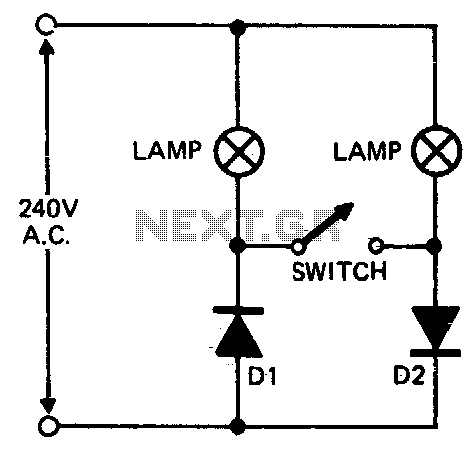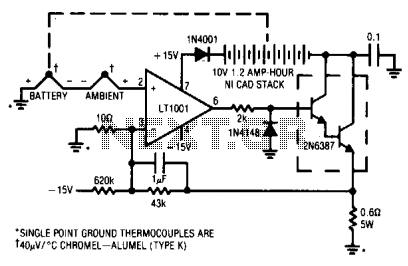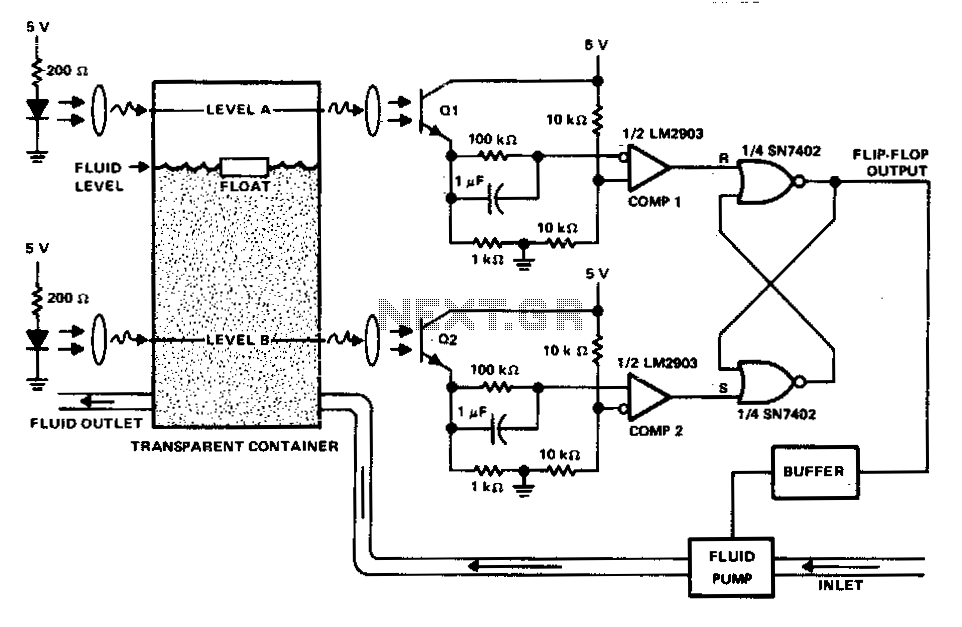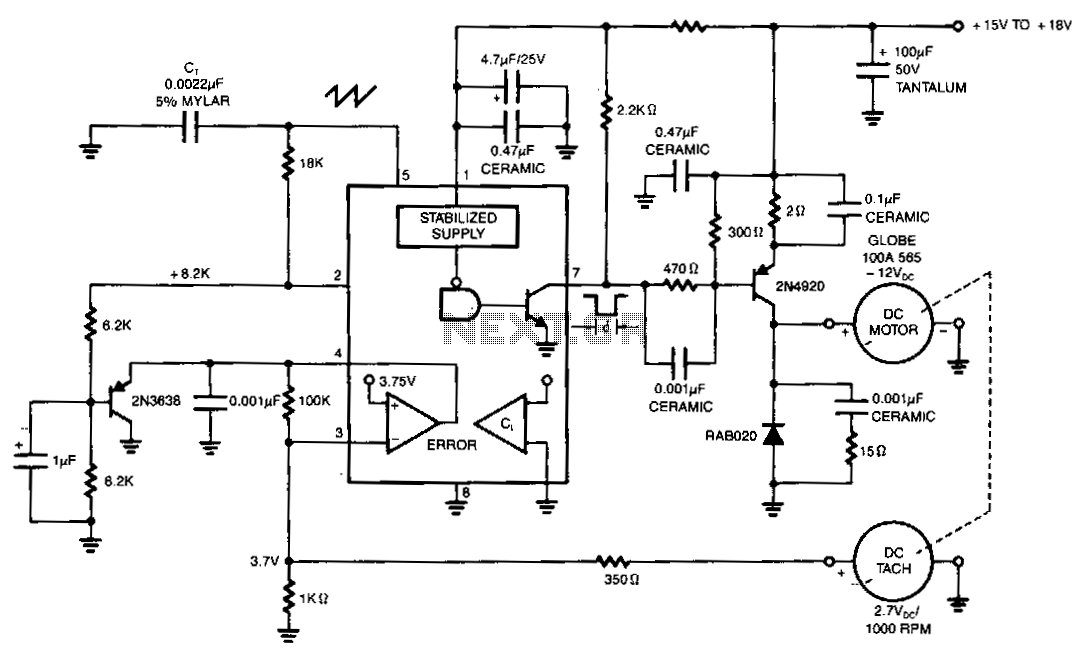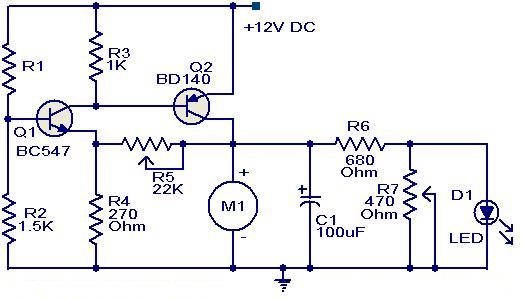
Full-wave scr control
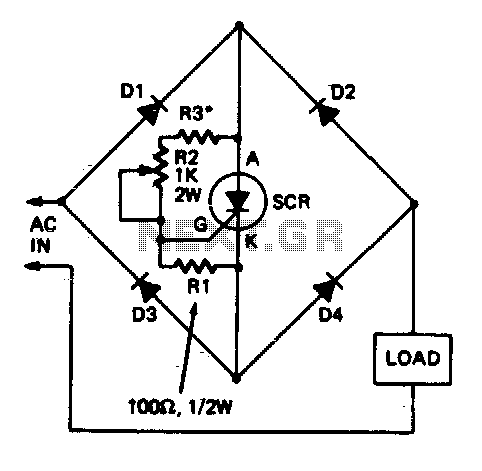
This circuit allows a single Silicon Controlled Rectifier (SCR) to control resistive loads in a full-wave configuration. Resistor R3 must be selected to ensure that when potentiometer R2 is set to its minimum value, the current flowing through the load reaches the desired minimum level. Additionally, the diodes used in the circuit should possess the same current and voltage ratings as the SCR.
The circuit consists of an SCR, which is a semiconductor device used to control power. It is typically employed in applications requiring the regulation of electrical power to resistive loads, such as heaters or incandescent lamps. The full-wave control configuration allows for the SCR to conduct during both halves of the AC waveform, effectively providing smoother control of the load current.
The potentiometer R2 serves as an adjustable resistor that allows for fine-tuning of the load current. By adjusting R2, the user can vary the gate trigger voltage applied to the SCR, thereby controlling the timing of the SCR's conduction phase. When R2 is set to its minimum, R3 ensures that the load receives a minimum current, which is critical for applications where maintaining a baseline current is necessary for proper operation.
Resistor R3 plays a vital role in this circuit by limiting the current flow through the load when the SCR is conducting. It is crucial that R3 is chosen based on the specific characteristics of the load and the desired minimum current level. The resistor must be rated appropriately to handle the power dissipation that occurs during operation.
In addition to the SCR and resistors, diodes are included in the circuit to protect against back EMF and ensure proper functioning of the SCR. It is essential that the diodes have equivalent current and voltage ratings to that of the SCR to prevent failure due to overvoltage or overcurrent conditions.
Overall, this circuit design provides an effective means of controlling resistive loads with a single SCR while ensuring that the load current can be finely adjusted to meet operational requirements. Proper selection of components, particularly R2 and R3, as well as the diodes, is critical to the reliability and performance of the circuit.This circuit enables a single SCR to provide fullwave control of resistive loads. Resistor R3 should be chosen so that when potentiometer R2 is at its minimum setting, the current in the load is at the required minimum level Diodes should have same current and voltage rating as the SCR.
The circuit consists of an SCR, which is a semiconductor device used to control power. It is typically employed in applications requiring the regulation of electrical power to resistive loads, such as heaters or incandescent lamps. The full-wave control configuration allows for the SCR to conduct during both halves of the AC waveform, effectively providing smoother control of the load current.
The potentiometer R2 serves as an adjustable resistor that allows for fine-tuning of the load current. By adjusting R2, the user can vary the gate trigger voltage applied to the SCR, thereby controlling the timing of the SCR's conduction phase. When R2 is set to its minimum, R3 ensures that the load receives a minimum current, which is critical for applications where maintaining a baseline current is necessary for proper operation.
Resistor R3 plays a vital role in this circuit by limiting the current flow through the load when the SCR is conducting. It is crucial that R3 is chosen based on the specific characteristics of the load and the desired minimum current level. The resistor must be rated appropriately to handle the power dissipation that occurs during operation.
In addition to the SCR and resistors, diodes are included in the circuit to protect against back EMF and ensure proper functioning of the SCR. It is essential that the diodes have equivalent current and voltage ratings to that of the SCR to prevent failure due to overvoltage or overcurrent conditions.
Overall, this circuit design provides an effective means of controlling resistive loads with a single SCR while ensuring that the load current can be finely adjusted to meet operational requirements. Proper selection of components, particularly R2 and R3, as well as the diodes, is critical to the reliability and performance of the circuit.This circuit enables a single SCR to provide fullwave control of resistive loads. Resistor R3 should be chosen so that when potentiometer R2 is at its minimum setting, the current in the load is at the required minimum level Diodes should have same current and voltage rating as the SCR.
